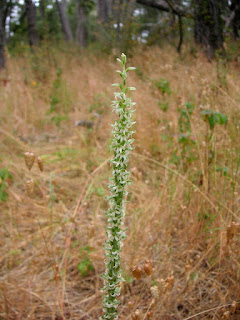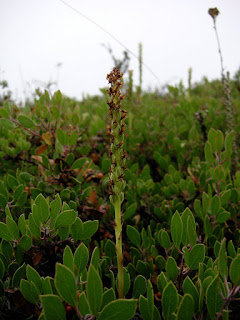

 grunion greeting
grunion greetingfull moon cycle, 10:35-12:30, overcast skies
Yeah, I know, I said we weren't going to do this again... but Dr. Martin let us know she was going to be in town and checking a couple beaches along Monterey Bay. I didn't commit to going out. It's been an extremely busy several weeks for us, and yet we wanted to see grunion this year.
We did. Count em'... 2. I'm okay with that.
Andy and I stood by our usual spot, while our cohorts walked down the beach. Karen called us over. Diane and her friend are reporting 30. I was playing with Karen's night scope (very cool toy) and didn't take any pictures of grunion for this blog. Here's a picture from last year that about sums up our experience of volunteering.
However, I did get a much better photo of that crab we saw last year on June 8. I've been looking for an ID and have been unsuccessful. I believe it is a type of shore crab. Can you ID?
ps 10/07/10 - While searching through Stanford's Hopkins Marine SeaNet site, I came upon the graceful rock crab (Metacarcinus gracilis, aka Cancer gracilis). Woohoo! Thanks to Steve at Blue Jay Barrens (link has been removed as he is no longer blogging), I now have a book that keys out this crab, but I had the preconceived notion that Cancer crabs were much, much larger and didn't believe the key. Of course, it's always easier to double-check keys once you know the answer.
We did. Count em'... 2. I'm okay with that.
Andy and I stood by our usual spot, while our cohorts walked down the beach. Karen called us over. Diane and her friend are reporting 30. I was playing with Karen's night scope (very cool toy) and didn't take any pictures of grunion for this blog. Here's a picture from last year that about sums up our experience of volunteering.
However, I did get a much better photo of that crab we saw last year on June 8. I've been looking for an ID and have been unsuccessful. I believe it is a type of shore crab. Can you ID?
ps 10/07/10 - While searching through Stanford's Hopkins Marine SeaNet site, I came upon the graceful rock crab (Metacarcinus gracilis, aka Cancer gracilis). Woohoo! Thanks to Steve at Blue Jay Barrens (link has been removed as he is no longer blogging), I now have a book that keys out this crab, but I had the preconceived notion that Cancer crabs were much, much larger and didn't believe the key. Of course, it's always easier to double-check keys once you know the answer.









































